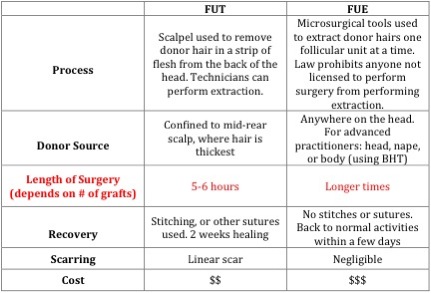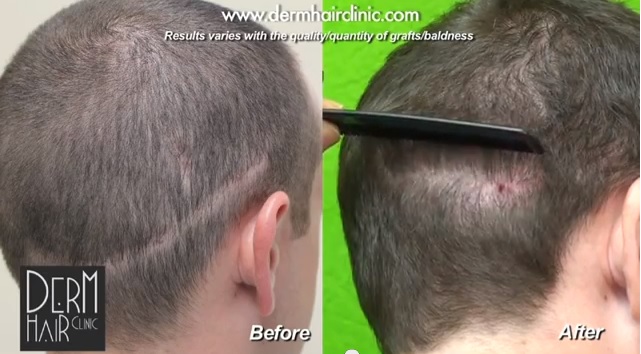- Your age
- How bald you are/how many hair grafts you’ll need
- What surgeon/hair clinic you choose
- How much you’re willing to pay
- The technique you choose
All of the above take part in the final results—and each one has the potential to make or break your hair transplant. Last, but certainly not least on the list, technique is like the vehicle you choose on the road to restoration. One will get you to your final destination while another may not be able to make it all the way.
FUE for Hair Transplant
FUE stands for follicular unit extraction. This method of surgical hair restoration got its big boost in the 1990’s, when development took off in full force. Hair surgeons wanted to improve on the existing techniques (one of them being FUT) in order to create the best outcomes possible.
FUE is a tedious, labor-intensive surgery that removes the hair grafts one at a time from the donor area for implantation into the recipient area. The donor area is usually comprised of the back of the head, but now with body hair transplant, FUE incorporates donor hair from almost anywhere on the body. FUE results in minimized scarring, quick healing, and optimal results—especially for hairline design.
FUT for Hair Transplant
FUT stands for follicular unit transplant. This method came before FUE, and thus it is a more antiquated method of hair transplant. Its development came about in the 1980’s but it still continues to be a popular method today. FUT removes the hair grafts by excising a linear strip of flesh from the back of the patient’s scalp. This creates the infamous strip scar, and also limits the number of hair grafts that can be transplanted as well as the caliber of hair that can be used. Ultimately, it is a quicker surgery, though more invasive, and hairline design suffers.
How to Choose, FUE vs. FUT
Each procedure has its pros and cons. While FUE creates superior results, FUT is more affordable for most people—and both require a skilled and experienced surgeon for the best possible results.


